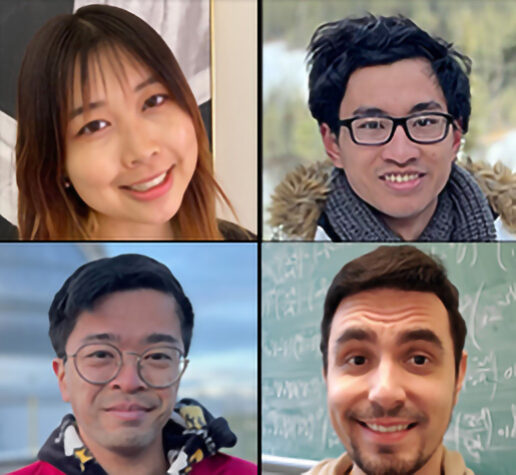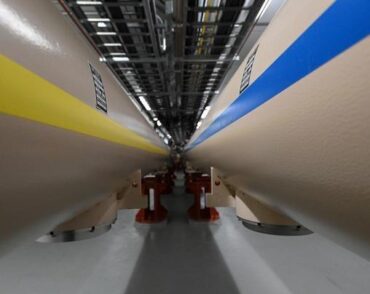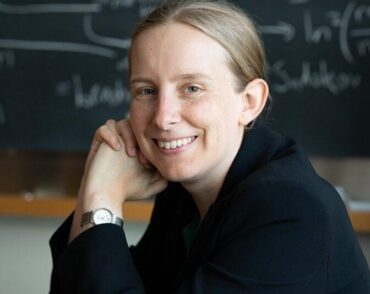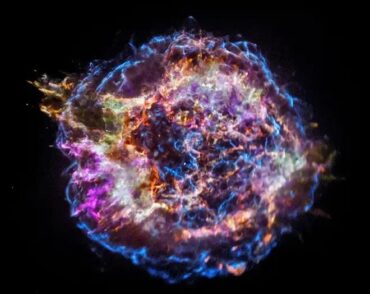
Physics students to attend meeting of Nobel laureates
Graduate students Mason Ng and Silviu-Marian Udrescu and physics students April Cheng and Tung Tran are invited to attend the upcoming Lindau Nobel Laureate Meeting.
The 73rd meeting will feature over 30 Nobel Laureates meeting more than 650 young scientists — undergraduates, master students, PhD students, and postdocs – from more than 90 nations. Nobel Prize winners in attendance will include William Phillips ’76, George Smoot ’66, PhD ’71, and 1976 Nobel Laureate and Thomas Dudley Cabot Professor of Physics Samuel C.C. Ting.
Mason Ng is finishing up his doctoral studies in astrophysics. He uses X-ray telescopes like the Neutron star Interior Composition Explorer (NICER) onboard the International Space Station and Imaging X-ray Polarimetry Explorer (IXPE) to understand the evolution and dynamics of neutron stars, which are the dense remnants resulting from the explosive deaths of massive stars.
Born in New Zealand and raised in Singapore, Ng majored in physics and mathematics at the University of Auckland. “I have always wanted to engage with like-minded young scientists and the Nobel Laureates on the pressing issues of our time,” he says. “As graduate students, we tend to be very silo’d into our research field … I am very interested to hear about the cutting-edge research that the other scientists are doing from other physics disciplines. I’m also very interested in continuing to learn from folks from other countries/cultures with different mindsets from mine in approaching problems and generating solutions.”
Before MIT, Silviu-Marian Udrescu studied math and physics at New York University Abu Dhabi. His advisor is Ronald Fernando Garcia Ruiz at the Laboratory for Nuclear Science. While at MIT, Silviu performed the first spectroscopic experimental investigation of a radioactive molecule, radium monofluoride (RaF) and the analysis of the obtained data.
“Basically we are using molecules, in particular radioactive ones, to explore the properties of nuclei and to search for new physics happening inside the atomic nucleus. When I joined Ronald’s group, he was the only one in the world studying radioactive molecules experimentally for this purpose.”
Silviu saw a post on Facebook about the Lindau event, two days before the deadline and decided to apply right away.
“It’s exciting,” says Silviu. “The there are lots of big names who will be there. I want to meet as many Nobel prize winners as possible. I have a list with several that I want to meet! But given that there will be 600 people present, yeah, I don’t expect I’ll get the one-on-one time with many of them. But if I get a chance to share my research, I think it would be great.”
Cheng is majoring in physics with a minor in mathematics, and has fast-tracked herself to graduate in May. Her research interests include cosmology, gravitational wave astrophysics, compact stellar remnants, and fast radio bursts. Cheng’s mentor Salvatore Vitale recommended that she apply.
She hopes to meet the 2011 Nobel Prize winners who discovered the accelerating expansion of the universe, but, she adds, “I’m probably more excited to meet with other undergrads and grad students from around the world. It’s a good networking opportunity!”
A native of San Diego, she’s still deciding on graduate school, where she wants to study gravitational wave astrophysics. “It’s just like a new window to see the universe.”
She has also been active with the MIT Physics Directed Reading Program, the MIT Physics Mentorship program, the MIT Physics Values Committee, and the MIT Undergraduate Women in Physics.
Tran is a native of Hanoi, Vietnam, and a senior majoring in physics, and mathematics and computer science. He is interested in Lindau’s opportunities for networking with fellow international students.
“I’m also excited to hear about various cutting-edge research directions and gain some sort of wisdom about where physics is heading,” says Tran. “Besides, I hope to identify new speakers for future (MIT-Harvard Society of Physics Students (SPS) Speaker Series Chilloquium!”
Tran, who is MIT’s SPS academic chair, heard about the Lindau meeting from past SPS president Hillary Diane Andales, a 2023 MIT physics alumna who is also attending.
His research includes inflationary cosmology under Prof. Alan Guth, dark matter phenomenology under Prof. David Kaiser, and statistical mechanics under Prof. Mehran Kardar.
“I just really enjoy building theoretical models that capture cool aspects of things, be it the Universe or neural networks,” says Tran.
After graduation, he will pursue his PhD in physics at Stanford, with an interest in the intersection of quantum gravity, cosmology, and machine learning for cosmology.
Since 1951, the annual Lindau Nobel Laureate Meetings have provided an opportunity for the next generation of leading scientists to hear lectures and participate in daily small-group discussions about the foundations and future of physics with Nobel prize winners.
The theme of the Lindau Meetings alternates between the three Nobel Prize scientific disciplines, Physics, Chemistry or Physiology/Medicine. This year’s theme will be Physics, featuring such topics as quantum physics, the future of energy, and the potential and impact of AI.
Lindau’s Council members Rainer Blatt (University of Innsbruck) and “Physics provides humankind with the basis to solve numerous of the fundamental challenges that we are currently facing,” explains Heiner Linke of Lund University, one of the Lindau Council members who developed the program. “What makes Lindau so special is that we bring together physicists from more than 90 countries with their own experiences, questions, and perspectives.”
[Updated April 18, 2024 at 3:00pm EST to include physics senior, Tung Tran, missing from original article]
[Updated April 16, 2024 at 5:30pm EST to include graduate student, Mason Ng, missing from original article]


